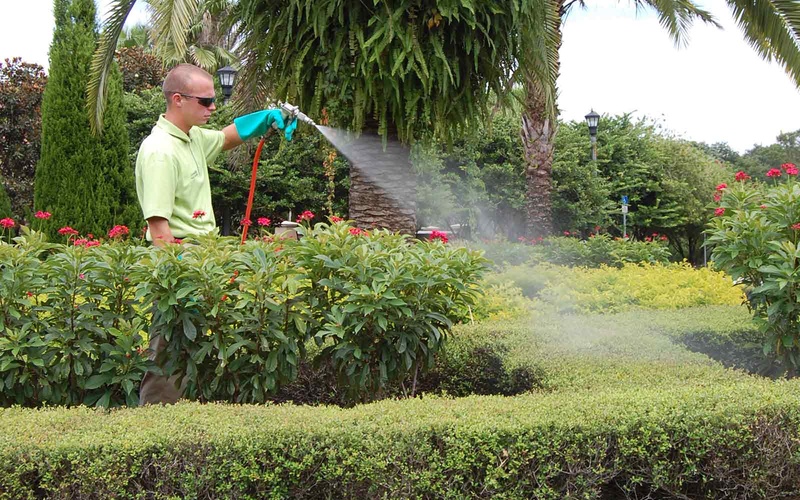
Sod Webworms: A Florida Summer Pest
Tropical sod webworms are turf caterpillars found in the southeastern United States. They are active during warm, humid summers, feeding on grass and ultimately creating brown, dead patches. Landscape companies prevent sod webworms through responsible lawn care practices and eradicate webworms with chemical treatments.
It’s summertime in Florida, which means heat, humidity, and increased susceptibility of lawns and grasses to warm-weather turf pests.
Most homeowners are familiar with chinch bugs and the extensive turf damage they can inflict. A lesser-known pest is the tropical sod webworm. Besides chinch bugs, the sod webworm is one of the most troublesome turf pests in the southeast United States.
What Are Tropical Sod Webworms?
The tropical sod webworm is a warm season lawn caterpillar found in the southeastern United States and other tropical areas. The larvae, or caterpillars, are destructive pests of warm season turf grasses, like St. Augustine, bermuda, and zoysia grasses. The first four larval stages only feed on the upper part of the grass blades, so the damage is often overlooked, but mature sod webworms can chew entire sections off the leaf blade, quickly making a lawn look like it was scalped.
Mature sod webworms are 3/4” to 1” long and grayish-green in color. They feed at night and then curl up and hide on the soil surface during the day.
The adult stage of the tropical sod webworm is a tan moth with a 3/4” to 1” wingspan. The moths themselves do not cause damage, but they lay eggs on the grass blades during the night.
Identifying a Tropical Sod Webworm Infestation
Some initial signs of a tropical sod webworm problem are patches of turf that are shorter and lighter green than the rest of the lawn, or the presence of tan moths that fly up out of the grass when disturbed. If you inspect your lawn closely, parting the grass in the affected areas, you may notice signs of chewing or scraping resulting in ragged-looking blades of grass, thinning grass, and an increase in weeds. You might even find the sod webworm larvae curled up on the soil surface.
Identifying a sod webworm problem can be difficult because the damage they cause is subtle. However, if left too long without being managed, the caterpillars can eat all the way down to the stolons and you may be left with brown, dead patches in your lawn. It’s important to keep an eye on your lawn and pay attention to subtle changes that may occur before the damage becomes advanced.
Managing Tropical Sod Webworms
Excessive fertilizing is one of the main causes of sod webworm outbreaks in Florida lawns. Proper fertilization, irrigation, and mowing can decrease the susceptibility of turf grass to the tropical sod webworm.
If there is a webworm infestation, landscape management companies like Floralawn will treat the affected areas with applications of above-ground chemical insecticides to combat the larval stages (not the flying moths).
Sod webworms are more manageable than chinch bugs and grass recovers more quickly from the damage done by these pests than others. While feeding damage often leads to weed growth in the yellowed patches of grass, damaged areas usually recover quickly as long as grass stays watered.